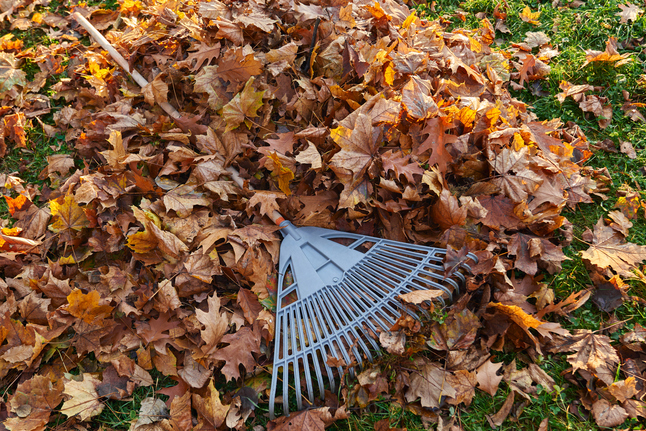
Preparing the Garden and Vegetable Plot for Winter: Work List for the Homestead. Part 1
Work in the Vegetable Garden
As the harvest of late-ripening vegetable varieties concludes, the following tasks are carried out:
- Processing plant tops
- Removing invasive weeds
- Preparing garden beds for winter
Harvesting Late Vegetables
Leaves are removed from growing zucchini and pumpkins to allow sunlight to reach them, speeding up ripening. Wooden boards or sheets of slate are placed under them to prevent contact with soil fungi and rot.
Pods of beans and peas are harvested, and the stems are cut, leaving stubs 7-10 cm high. These serve as a base for "green fertilizers." The plant continues to grow until temperatures drop to 0°C, at which point the area is dug up along with the beans. As the legumes decompose, they enrich the soil with nitrogen and other nutrients.
Harvested root vegetables are laid out on the ground to dry for a few hours, after which they are sorted. Only undamaged specimens are saved for storage, and the harvest is collected into bags or crates, layered with straw, and taken to the cellar for winter storage.
Vegetable Storage Time in Cellar (in months):
- Beets – 3 months
- Potatoes – 6–8 months
- Turnips – 4–5 months
- Late-ripening cabbage – 2–3 months
- Onions – 10–12 months
- Parsnip – 4–6 months
- Garlic – 3–6 months
Vegetables that contain seeds, such as tomatoes and cucumbers, may continue to ripen after harvesting. The collected fruits are stored in a cool, dry place and consumed as they ripen over the following weeks.
Processing Plant Tops
After the harvest, stems and leaves remain. Some people discard them, while others dry and burn them. However, the stems can also become useful fertilizer for the garden.
Ways to process stems:
- Dry, chop, and turn them into mulch to use in the next season.
- Make compost by creating a pile at least 1 meter high, layering brown materials (branches, straw, and dry leaves) with green materials (fresh tops and leaves) in a 3:1 ratio.
- Large stems, such as tomato stalks, should be chopped. Turn the pile every 1–2 weeks for even decomposition. If it rains and the pile becomes too wet, turn it more frequently. In dry conditions, moisten the pile to the consistency of a damp sponge. A pile that's too wet will rot instead of composting. Check the pile with your hand – it should feel warm, with a temperature of 55°C.
Weed Removal
Autumn is the time to remove perennial weeds from garden beds and paths. Plants with creeping roots (like bindweed and couch grass) are dug out when tilling the vegetable garden. The extracted roots are left to dry on a tarp or agrotextile. Dry weeds are burned instead of being added to the compost pile, as any contact with moisture can cause them to regrow.
Preparing the Beds
Autumn is the best time to apply phosphates, manure, and compost. Over the winter, these materials will react and begin enriching the soil. The recommended application rate for manure and compost is 1–2 buckets per square meter.
While it's often said to dig "a spade's depth," there's a better approach:
- Remove the top 5–10 cm of sod and set it aside, as this is the most fertile layer and should remain on the surface.
- Dig the next layer 10–15 cm deep, mixing the soil with compost.
- Remove stones and large weed roots.
- If you have poultry, let them loose on the bed – chickens enjoy collecting pests that surface.
- Return the previously removed sod or use it to fill low spots in uneven areas. Level the soil with a rake. This completes bed preparation.
Winter Vegetable Garden
After the harvest, the temptation is to rest, thinking all seeds can be sown in spring. However, fall planting has several advantages:
- Seeds toughen up – by spring, the weak ones die off, and only the strong ones sprout.
- Plants become more resistant to diseases.
- Seedlings emerge faster, growing as soon as the weather is biologically suitable.
- The harvest ripens 2–3 weeks earlier.
- Hardened plants can withstand frosts down to –3°C without damage.
- Pests cause less damage to seedlings and crops.
Experienced gardeners also claim that fall planting increases crop yields by 15–20%.
Timing for Fall Planting:
- Bulbs (garlic and onions) – 1.5 months before the first frosts.
- Beets, carrots, and other root vegetables – in the second half of October or early November, when soil temperature is around 3°C.
Choose elevated areas for planting, as waterlogging during winter can cause seeds to rot. Twice as much seed material is used as in spring planting. Don't sprout the seeds, and plant them in holes, pressing the soil down to improve seed-soil contact. Do not water the beds. After the soil freezes, you can cover the bed with mulch to prevent temperature fluctuations during thaws and sudden frosts.
Caring for Fruit Trees and Shrubs in Winter Preparation
Tasks include:
- Harvesting remaining crops from apple, plum, pear, peach trees, and grapes.
- Cleaning up fallen fruit and any cherries or plums still on the branches.
- Removing weeds and diseased plants that weren't cleared earlier.
- Digging around the base of fruit trees.
- Mowing the lawns under the trees.
Leaf Cleanup
Leaves are rich in minerals. If mixed into the soil during garden tilling, they become a natural fertilizer, especially beneficial for dense soils. However, avoid using leaves on clayey areas as they retain moisture, which can lead to root rot. Leaves can also be used as mulch to cover plant roots.
The second part will continue with instructions on whitewashing trees, berry bush care, and more.
Recent articles from Outdoor

The Art of Al Fresco Dining: Setting the Perfect Outdoor Table
Al fresco dining, or dining outdoors, is a delightful way to enjoy meals in the fresh air, surrounded by the beauty of nature. Whether you’re hosting a casual brunch or an elegant dinner party, ...

Outdoor Entertaining: Tips for Hosting the Perfect Garden Party
Hosting a garden party is a wonderful way to enjoy the outdoors while entertaining friends and family. Whether it’s a casual get-together or a more formal event, planning the perfect garden part...

Outdoor Fitness: Workouts You Can Do in Your Backyard
Working out in your backyard is a convenient and refreshing way to stay active without the need for a gym membership or fancy equipment. Whether you have a spacious garden or a small patio, you ...